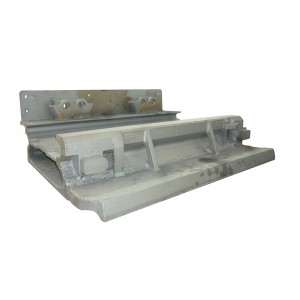Sep . 28, 2024 10:21 Back to list
Understanding the Casting Processes for Iron and Steel Materials in Manufacturing
The Casting of Iron and Steel A Timeless Craft
Casting, a fundamental manufacturing process, has been pivotal in shaping industries since ancient times. Among various metals, iron and steel have emerged as the most widely used materials for casting due to their versatility, strength, and durability. This article explores the principles, processes, advantages, and modern innovations in the casting of iron and steel.
Principles of Casting
Casting involves pouring molten metal into a mold where it solidifies into a predetermined shape. The basic principles of casting rely on the transformation of metal from a liquid to a solid state. Iron and steel, with their unique properties—such as high melting points and the ability to form complex shapes—make them ideal candidates for this technique. Casting is particularly advantageous for producing intricate components that would be difficult or impossible to create through other methods.
Types of Casting Processes
There are several types of casting processes used for iron and steel, each with its own distinct advantages
.1. Sand Casting This is one of the oldest and most common methods. It involves creating a mold from sand, which can easily be shaped and allows for the production of large parts. The simplicity and low cost of sand casting make it popular in both small-scale and large-scale production.
2. Investment Casting Also known as lost-wax casting, this process allows for high precision and detailed designs. A wax model is coated in a ceramic material, and once the wax is melted away, molten metal is poured into the mold. This method is often used for intricate components in the aerospace and automotive sectors.
casting of iron and steel

3. Die Casting In this process, molten metal is forced into a mold under high pressure. It is commonly used for producing smaller, high-volume parts that require exact dimensions and smooth surfaces—perfect for consumer electronics and automotive components.
4. Continuous Casting This technique is primarily used for steel and involves the direct solidification of molten steel into semi-finished shapes like billets or slabs, ensuring a consistent quality and reducing waste.
Advantages of Casting Iron and Steel
The casting of iron and steel offers numerous advantages. One major benefit is the ability to produce complex geometries that are lightweight yet robust. Moreover, the casting process allows for mass production, making it cost-effective. The inherent properties of cast iron, such as its excellent wear resistance and ability to absorb vibrations, make it suitable for engine blocks, pipes, and heavy machinery. Steel, on the other hand, offers higher tensile strength and ductility, making it ideal for construction and structural applications.
Modern Innovations in Casting
As technology advances, so too does the casting process. Innovations like 3D printing are beginning to revolutionize traditional casting methods. By using additive manufacturing, mold production can be streamlined, enabling greater customization and reducing lead times. Additionally, simulation software allows engineers to predict potential casting defects, helping to improve quality control and reduce material wastage.
In conclusion, the casting of iron and steel remains a vital aspect of modern manufacturing. From the ancient foundries to today’s high-tech facilities, the ability to transform molten metal into usable forms is a skill that continues to evolve. With advancements in technology, the future of casting promises even greater efficiency and creativity, ensuring that iron and steel will remain cornerstones of industry for generations to come.
-
Centrifugally Cast Iron Water Main Pipe for Reliable Mains
NewsAug.22,2025
-
Durable Centrifugally Cast Iron Water Main Pipe
NewsAug.11,2025
-
Centrifugally Cast Iron Water Main Pipes for Reliability
NewsAug.10,2025
-
High-Quality Centrifugally Cast Iron Water Main Pipes
NewsAug.09,2025
-
Durable Cast Iron Water Main Pipe & Drainage Solutions
NewsAug.08,2025
-
Buy Cast Iron Pipe: Premium Ductile Iron & Drain Solutions
NewsAug.07,2025


